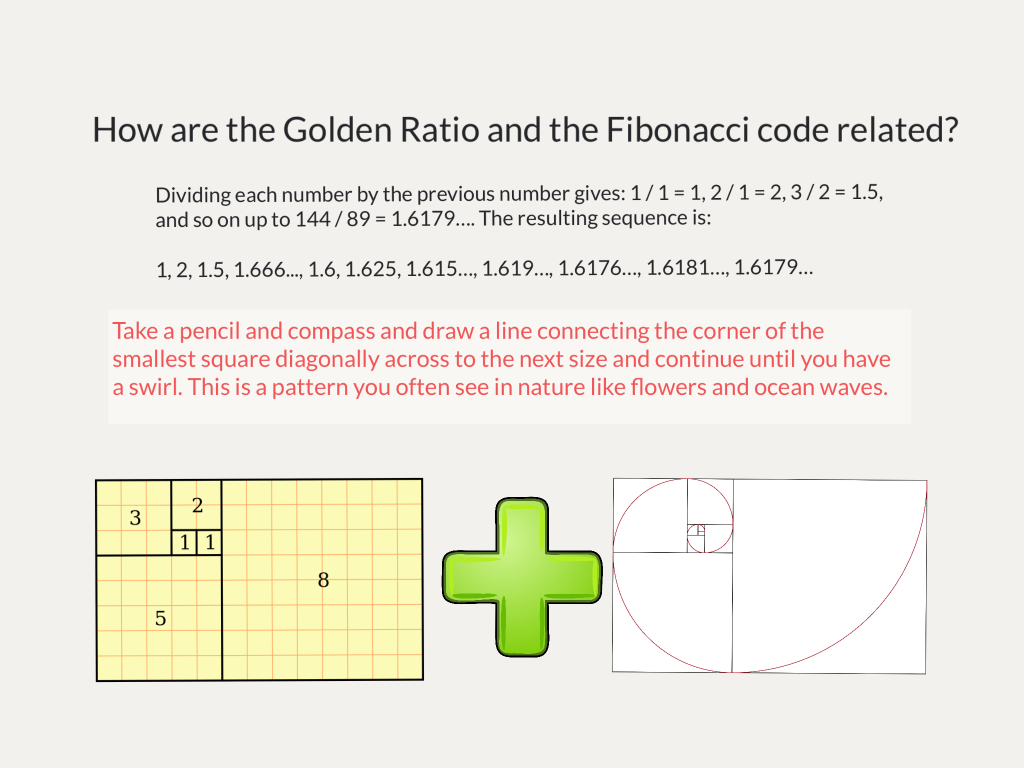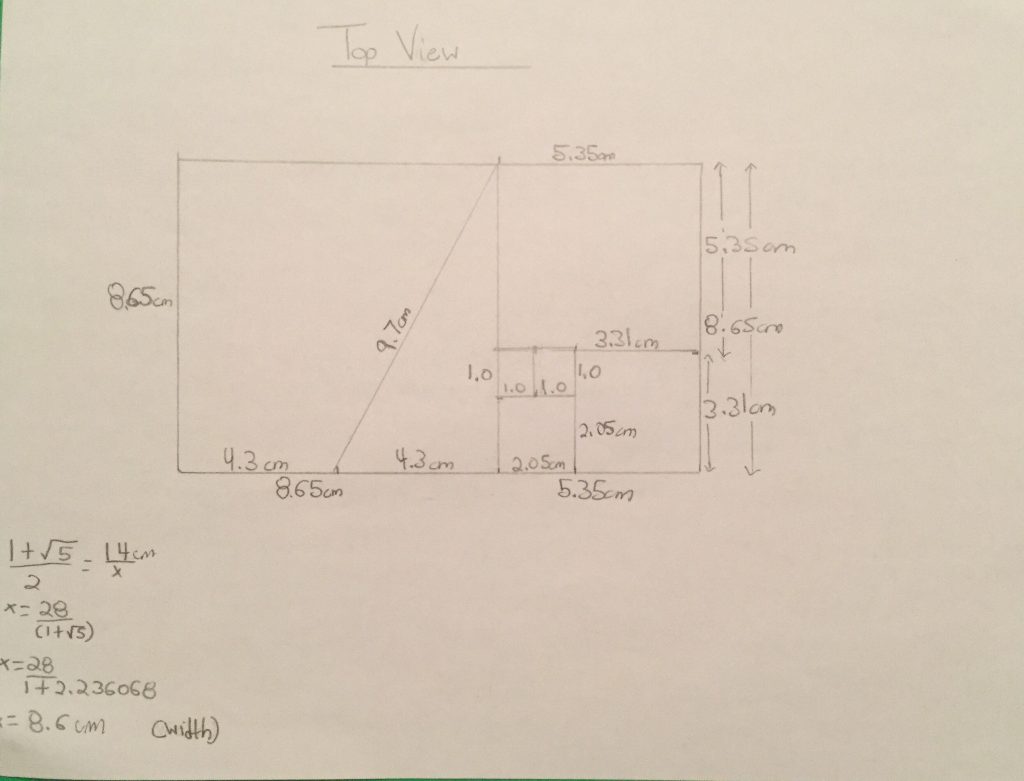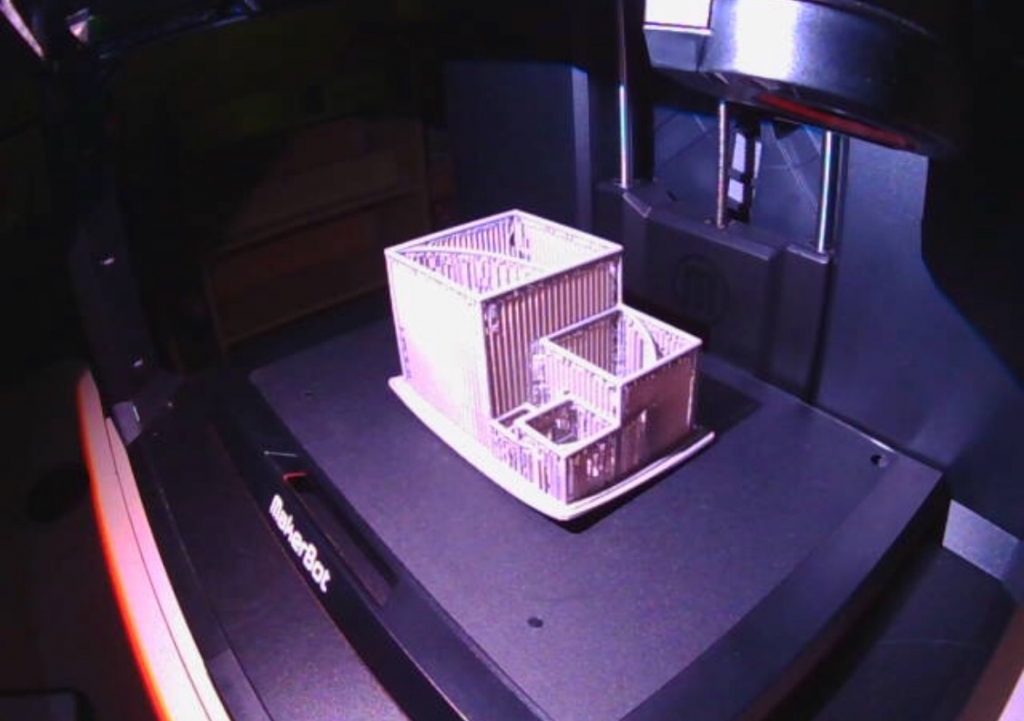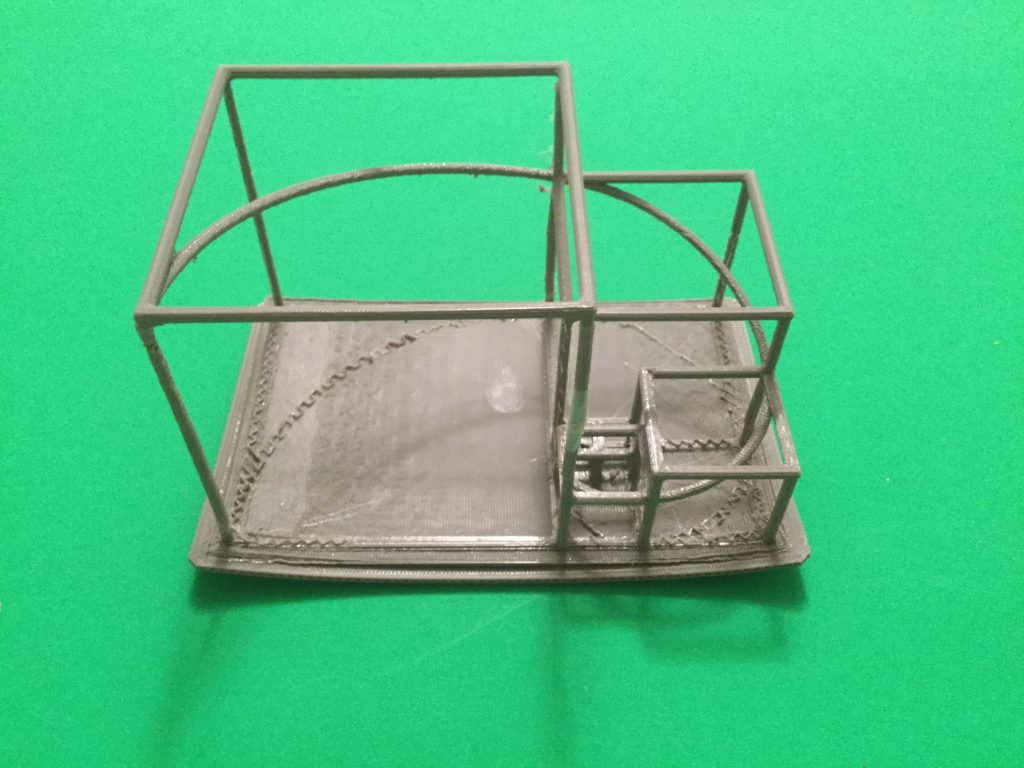Have you heard of the Fibonacci pattern or the Golden Ratio? I hadn’t but since we did this math project, I’ve learned a lot and now see these shapes around in nature and buildings. The project we were given for Unit 2 had the inquiry question: “How is math used in art to create patterns and appeal to our sense of aesthetics? The project goal was to create a work of art, music, architecture, or exposition of nature that uses the Golden Ratio or the Fibonacci pattern. The design criteria was to show the how the Golden Ratio was used in the project with calculations, a graphic overlay and a write-up.
First I started off by defining the Golden Ratio:
Next, I looked at the Fibonacci pattern:
Then I looked at how they are related and how you can get the swirl pattern
Here are a few examples and why people like them:
At school we recently got a 3D printer. I decided to try to make an art piece on the computer that would be three dimensional and relate to the Golden Rectangle and have a Fibonacci swirl. In 3D printing an object is created by laying down layer after layer of material until it is done. It takes a long time to print. It is different than taking material and cutting something out of it.
I drew all of my designs as well as all of the measurements on a piece of paper. This was a hard part of the project due to all of the math that had to done.
I wanted to show the squares in a 3D and then have the Fibonacci swirl go through it. I used a 3D printing software called MakerBot Print. Mr Hughes, one of my teachers, is the keeper of the school 3D printer. I took the design to him and we printed it. It took about 10 hours to print the entire 3D model. The first time the design didn’t work but luckily I could try a second time and it worked out.
After the printer was finished printing it was time to clear out the supports.
When you 3D print something you usually have to put all kinds of support on it. In my case there was actual more material that was used for supports than material used for the actual model. After I finished cutting out the extra material the model was done.
I made an Explain Everything presentation to present the research and the art for the project. Now I was ready to present to the class. The presentation is below.
In conclusion I learned a lot about the Fibonacci pattern as well as the Golden Ratio while doing this project and how they show up in nature, art and buildings. I now know how the math works behind the ratio, golden rectangle and interesting patterns in the Fibonacci numbers. I was lucky I could get experience in how to design a 3D model in a 3D printing software as well as how to print a model. This is all information I’ll use again at school or outside of school.









